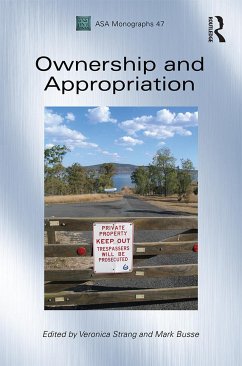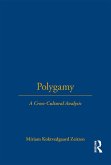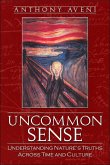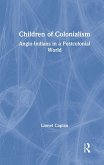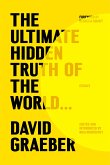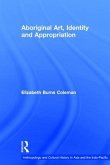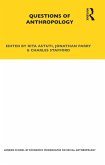Ownership and Appropriation
Herausgeber: Strang, Veronica; Busse, Mark
Ownership and Appropriation
Herausgeber: Strang, Veronica; Busse, Mark
- Gebundenes Buch
- Merkliste
- Auf die Merkliste
- Bewerten Bewerten
- Teilen
- Produkt teilen
- Produkterinnerung
- Produkterinnerung
In a world of finite resources, expanding populations and widening structural inequalities, the ownership of things is increasingly contested.
Andere Kunden interessierten sich auch für
![The Gift The Gift]() Marcel MaussThe Gift30,99 €
Marcel MaussThe Gift30,99 €![Polygamy Polygamy]() Miriam Koktvedgaard ZeitzenPolygamy206,99 €
Miriam Koktvedgaard ZeitzenPolygamy206,99 €![Uncommon Sense: Understanding Nature's Truths Across Time and Culture Uncommon Sense: Understanding Nature's Truths Across Time and Culture]() Anthony AveniUncommon Sense: Understanding Nature's Truths Across Time and Culture25,99 €
Anthony AveniUncommon Sense: Understanding Nature's Truths Across Time and Culture25,99 €![Children of Colonialism Children of Colonialism]() Lionel CaplanChildren of Colonialism202,99 €
Lionel CaplanChildren of Colonialism202,99 €![The Ultimate Hidden Truth of the World . . . The Ultimate Hidden Truth of the World . . .]() David GraeberThe Ultimate Hidden Truth of the World . . .31,99 €
David GraeberThe Ultimate Hidden Truth of the World . . .31,99 €![Aboriginal Art, Identity and Appropriation Aboriginal Art, Identity and Appropriation]() Elizabeth Burns ColemanAboriginal Art, Identity and Appropriation202,99 €
Elizabeth Burns ColemanAboriginal Art, Identity and Appropriation202,99 €![Questions of Anthropology Questions of Anthropology]() Questions of Anthropology160,99 €
Questions of Anthropology160,99 €-
-
-
In a world of finite resources, expanding populations and widening structural inequalities, the ownership of things is increasingly contested.
Hinweis: Dieser Artikel kann nur an eine deutsche Lieferadresse ausgeliefert werden.
Hinweis: Dieser Artikel kann nur an eine deutsche Lieferadresse ausgeliefert werden.
Produktdetails
- Produktdetails
- Verlag: Taylor & Francis Ltd (Sales)
- English edition
- Seitenzahl: 318
- Erscheinungstermin: 2. Februar 2012
- Englisch
- Abmessung: 236mm x 157mm x 23mm
- Gewicht: 612g
- ISBN-13: 9781847886842
- ISBN-10: 1847886841
- Artikelnr.: 32542136
- Herstellerkennzeichnung
- Libri GmbH
- Europaallee 1
- 36244 Bad Hersfeld
- gpsr@libri.de
- Verlag: Taylor & Francis Ltd (Sales)
- English edition
- Seitenzahl: 318
- Erscheinungstermin: 2. Februar 2012
- Englisch
- Abmessung: 236mm x 157mm x 23mm
- Gewicht: 612g
- ISBN-13: 9781847886842
- ISBN-10: 1847886841
- Artikelnr.: 32542136
- Herstellerkennzeichnung
- Libri GmbH
- Europaallee 1
- 36244 Bad Hersfeld
- gpsr@libri.de
Veronica Strang is Executive Director at the Institute of Advanced Study, Durham University, and the author of What Anthropologists Do (2009).Mark Busse is Senior Lecturer in Social Anthropology, University of Auckland.
ForewordChris Hann (Max Planck Institute, Germany)IntroductionMark Busse
(University of Auckland, New Zealand) and Veronica Strang (University of
Auckland, New Zealand)PART ONE - SUBJECTS, PERSONHOOD AND PEOPLEHOODChapter
1. Sharing, Stealing and Borrowing SimultaneouslyMarilyn Strathern
(University of Cambridge, UK)Chapter 2. On Having Achieved Appropriation:
the Anak Berprestasi of Kepulauan RiauNicholas Long (University of
Cambridge, UK)Chapter 3. Appropriating Authentic Practice: Competing
Discourses of 'Being There', 'Having Been There' and 'Virtually Being
There'Tamara Kohn (University of Melbourne, Australia) Chapter 4. Dreaming
in Thread: from Ritual to Art and Property(s) Between Katie Glaskin
(University of Western Australia)Chapter 5. The Legal Geographies of
Cultural Rights: Community Subjects and their TraditionsRosemary Coombe
(York University, UK)PART TWO - MATERIALITY AND IMMATERIALITYChapter 6.
Cultural AppropriationTaihakurei (Eddie) Durie (Ngati Kauwhata, Aotearoa,
New Zealand)Chapter 7. The Double Movement of Property Rights and Rental
Regimes in Papua New GuineaColin Filer (Australian National University) and
Michael Lowe (Australian National University)Chapter 8. Fluid Forms: Owning
Water in AustraliaVeronica Strang (University of Auckland, New
Zealand)Chapter 9. Appropriating Fish, Appropriating Fishermen: Tradable
Permits, Natural Resources and Existential UncertaintyMonica Minnegal
(University of Melbourne, Australia), Peter Dwyer (University of Melbourne,
Australia)Chapter 10. Can't Find Nothing on the Radio: Access to the Radio
Frequency Spectrum in NepalMichael Wilmore (University of Adelaide,
Australia), Pawan Prakash Upreti (Equal Access Nepal)PART THREE - OWNERSHIP
AS SOCIAL COMMUNICATIONChapter 11. The Village That Wasn't There: the
Narrative Appropriation of a Tourist DestinationAdam Kaul (Augustana
College, USA)Chapter 12. Formed and Forming: the Articulations of Yolngu
Art in its ContextsHoward Morphy (Australian National University)Index
(University of Auckland, New Zealand) and Veronica Strang (University of
Auckland, New Zealand)PART ONE - SUBJECTS, PERSONHOOD AND PEOPLEHOODChapter
1. Sharing, Stealing and Borrowing SimultaneouslyMarilyn Strathern
(University of Cambridge, UK)Chapter 2. On Having Achieved Appropriation:
the Anak Berprestasi of Kepulauan RiauNicholas Long (University of
Cambridge, UK)Chapter 3. Appropriating Authentic Practice: Competing
Discourses of 'Being There', 'Having Been There' and 'Virtually Being
There'Tamara Kohn (University of Melbourne, Australia) Chapter 4. Dreaming
in Thread: from Ritual to Art and Property(s) Between Katie Glaskin
(University of Western Australia)Chapter 5. The Legal Geographies of
Cultural Rights: Community Subjects and their TraditionsRosemary Coombe
(York University, UK)PART TWO - MATERIALITY AND IMMATERIALITYChapter 6.
Cultural AppropriationTaihakurei (Eddie) Durie (Ngati Kauwhata, Aotearoa,
New Zealand)Chapter 7. The Double Movement of Property Rights and Rental
Regimes in Papua New GuineaColin Filer (Australian National University) and
Michael Lowe (Australian National University)Chapter 8. Fluid Forms: Owning
Water in AustraliaVeronica Strang (University of Auckland, New
Zealand)Chapter 9. Appropriating Fish, Appropriating Fishermen: Tradable
Permits, Natural Resources and Existential UncertaintyMonica Minnegal
(University of Melbourne, Australia), Peter Dwyer (University of Melbourne,
Australia)Chapter 10. Can't Find Nothing on the Radio: Access to the Radio
Frequency Spectrum in NepalMichael Wilmore (University of Adelaide,
Australia), Pawan Prakash Upreti (Equal Access Nepal)PART THREE - OWNERSHIP
AS SOCIAL COMMUNICATIONChapter 11. The Village That Wasn't There: the
Narrative Appropriation of a Tourist DestinationAdam Kaul (Augustana
College, USA)Chapter 12. Formed and Forming: the Articulations of Yolngu
Art in its ContextsHoward Morphy (Australian National University)Index
ForewordChris Hann (Max Planck Institute, Germany)IntroductionMark Busse
(University of Auckland, New Zealand) and Veronica Strang (University of
Auckland, New Zealand)PART ONE - SUBJECTS, PERSONHOOD AND PEOPLEHOODChapter
1. Sharing, Stealing and Borrowing SimultaneouslyMarilyn Strathern
(University of Cambridge, UK)Chapter 2. On Having Achieved Appropriation:
the Anak Berprestasi of Kepulauan RiauNicholas Long (University of
Cambridge, UK)Chapter 3. Appropriating Authentic Practice: Competing
Discourses of 'Being There', 'Having Been There' and 'Virtually Being
There'Tamara Kohn (University of Melbourne, Australia) Chapter 4. Dreaming
in Thread: from Ritual to Art and Property(s) Between Katie Glaskin
(University of Western Australia)Chapter 5. The Legal Geographies of
Cultural Rights: Community Subjects and their TraditionsRosemary Coombe
(York University, UK)PART TWO - MATERIALITY AND IMMATERIALITYChapter 6.
Cultural AppropriationTaihakurei (Eddie) Durie (Ngati Kauwhata, Aotearoa,
New Zealand)Chapter 7. The Double Movement of Property Rights and Rental
Regimes in Papua New GuineaColin Filer (Australian National University) and
Michael Lowe (Australian National University)Chapter 8. Fluid Forms: Owning
Water in AustraliaVeronica Strang (University of Auckland, New
Zealand)Chapter 9. Appropriating Fish, Appropriating Fishermen: Tradable
Permits, Natural Resources and Existential UncertaintyMonica Minnegal
(University of Melbourne, Australia), Peter Dwyer (University of Melbourne,
Australia)Chapter 10. Can't Find Nothing on the Radio: Access to the Radio
Frequency Spectrum in NepalMichael Wilmore (University of Adelaide,
Australia), Pawan Prakash Upreti (Equal Access Nepal)PART THREE - OWNERSHIP
AS SOCIAL COMMUNICATIONChapter 11. The Village That Wasn't There: the
Narrative Appropriation of a Tourist DestinationAdam Kaul (Augustana
College, USA)Chapter 12. Formed and Forming: the Articulations of Yolngu
Art in its ContextsHoward Morphy (Australian National University)Index
(University of Auckland, New Zealand) and Veronica Strang (University of
Auckland, New Zealand)PART ONE - SUBJECTS, PERSONHOOD AND PEOPLEHOODChapter
1. Sharing, Stealing and Borrowing SimultaneouslyMarilyn Strathern
(University of Cambridge, UK)Chapter 2. On Having Achieved Appropriation:
the Anak Berprestasi of Kepulauan RiauNicholas Long (University of
Cambridge, UK)Chapter 3. Appropriating Authentic Practice: Competing
Discourses of 'Being There', 'Having Been There' and 'Virtually Being
There'Tamara Kohn (University of Melbourne, Australia) Chapter 4. Dreaming
in Thread: from Ritual to Art and Property(s) Between Katie Glaskin
(University of Western Australia)Chapter 5. The Legal Geographies of
Cultural Rights: Community Subjects and their TraditionsRosemary Coombe
(York University, UK)PART TWO - MATERIALITY AND IMMATERIALITYChapter 6.
Cultural AppropriationTaihakurei (Eddie) Durie (Ngati Kauwhata, Aotearoa,
New Zealand)Chapter 7. The Double Movement of Property Rights and Rental
Regimes in Papua New GuineaColin Filer (Australian National University) and
Michael Lowe (Australian National University)Chapter 8. Fluid Forms: Owning
Water in AustraliaVeronica Strang (University of Auckland, New
Zealand)Chapter 9. Appropriating Fish, Appropriating Fishermen: Tradable
Permits, Natural Resources and Existential UncertaintyMonica Minnegal
(University of Melbourne, Australia), Peter Dwyer (University of Melbourne,
Australia)Chapter 10. Can't Find Nothing on the Radio: Access to the Radio
Frequency Spectrum in NepalMichael Wilmore (University of Adelaide,
Australia), Pawan Prakash Upreti (Equal Access Nepal)PART THREE - OWNERSHIP
AS SOCIAL COMMUNICATIONChapter 11. The Village That Wasn't There: the
Narrative Appropriation of a Tourist DestinationAdam Kaul (Augustana
College, USA)Chapter 12. Formed and Forming: the Articulations of Yolngu
Art in its ContextsHoward Morphy (Australian National University)Index

